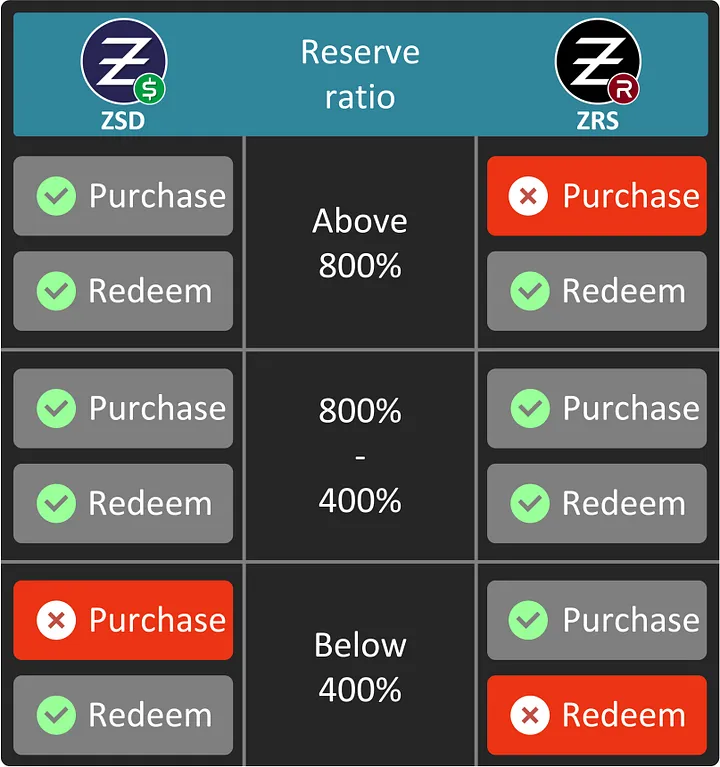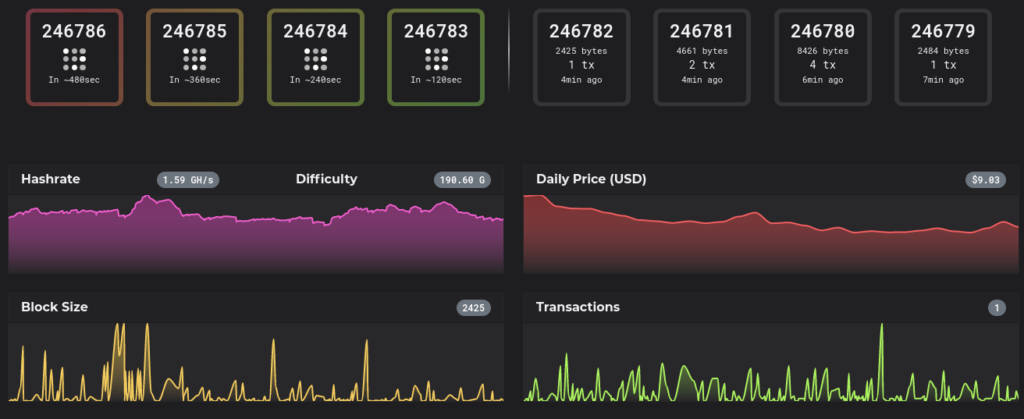In the ever-evolving landscape of cryptocurrencies, where innovation is the norm and privacy and stability are paramount, one project stands out: Zephyr Protocol. Combining the best of both worlds, Zephyr Protocol introduces the first private, reserve-backed stablecoin system, offering users a groundbreaking approach to financial autonomy and security.
At the core of Zephyr Protocol lies a fusion of two powerful frameworks: the minimal Djed protocol and the privacy-preserving features of Monero. Developed through a collaborative effort involving Emurgo, IOHK, and the Ergo Foundation, the Djed protocol draws inspiration from the successful AgeUSD project, demonstrating its resilience and efficacy in various crypto ventures.
Djed Protocol

Zephyr Protocol has adopted and integrated the Djed protocol into their layer-one blockchain. Unlike Ergo and Cardano which implemented this over-collateralized algorithmic stablecoin in their ecosystems after the blockchain launched, Zephyr has chosen to implement it at the protocol level since the get-go. Thus making it a cornerstone of the blockchain utility from the beginning.
Zephyr empowers users to mint or redeem Zephyr Stable Dollar ($ZSD) and Zephyr Reserve Shares ($ZRS), all anchored by the base coin (ZEPH). The pricing of stable coins is determined by a meticulously crafted oracle, incorporating both spot and moving average prices to ensure stability and accuracy. Meanwhile, the price of reserve coins is calculated based on real-time reserve data, providing users with transparent and reliable valuation metrics.
Central to the functionality of Zephyr Protocol is its robust reserve system, designed to maintain a minimum collateralization ratio of 400% at all times. In the event of a price decrease that threatens this threshold, the minting of new stable coins is temporarily suspended, while the price of reserve coins is adjusted to incentivize their purchase, thereby stabilizing the system and mitigating risks.
Furthermore, reserve token holders are granted the privilege to redeem their shares for their equitable share of the reserve, reflecting their contribution to the system. As stable coins are minted and redeemed, the fees accrued are channeled back into the reserve, serving as profit for reserve token holders. To prevent dilution and maintain the integrity of the reserve, Zephyr Protocol imposes a maximum reserve ratio of 800%, ensuring equitable distribution and sustainability.
A key innovation introduced by Zephyr Protocol is the implementation of dual reserve ratios, tailored to the spot and moving average prices, respectively. Unlike its predecessor, DJED, which relies on a single oracle price, Zephyr Protocol employs two, eliminating potential vulnerabilities and enhancing the system’s resilience against price manipulation.

Privacy
In the dynamic landscape of digital currencies, where privacy and stability are paramount, Zephyr Protocol emerges as a pioneering solution, combining cutting-edge technology with a commitment to user empowerment and security. With its unique blend of privacy-centric features inherited from Monero and innovative reserve-backed stability, Zephyr Protocol represents a new frontier in decentralized finance.
At the heart of Zephyr Protocol lies a robust foundation of privacy-enhancing features inherited from Monero, a leading privacy-focused cryptocurrency. By integrating Monero’s proven methodologies, Zephyr Protocol fortifies transactional privacy and confidentiality, ensuring users can transact with confidence and anonymity.
One of the key privacy features inherited by Zephyr Protocol is ring signatures, a cryptographic technique that obfuscates the origin of transactions by mixing a user’s account keys with public keys from the blockchain. This innovative methodology ensures that the identity of the user remains concealed, making it impossible to isolate and trace transactions back to their source.
Moreover, Zephyr Protocol leverages bulletproofs, a form of non-interactive zero-knowledge proof pioneered by Monero. Bulletproofs obscure transaction amounts while protecting privacy, thereby enhancing security and confidentiality. Additionally, by reducing the size of cryptographic proofs, bulletproofs optimize blockchain efficiency, conserving space and improving transaction speed.
In conclusion, Zephyr Protocol represents a paradigm shift in the realm of digital currencies, offering users a revolutionary blend of privacy, stability, and autonomy. By harnessing the power of Monero’s privacy-centric features and pioneering reserve-backed stability, Zephyr Protocol sets a new standard for decentralized finance, paving the way for a more secure, inclusive, and resilient financial ecosystem.
RandomX
RandomX is a Proof-of-Work consensus algorithm developed by Monero. “This innovative POW is optimized for CPUs and it’s based on execution of random code and other memory-heavy techniques. The goal is to discourage the use of specialized hardware (like ASICs) for mining(…). RandomX was created with the intent of keeping mining decentralized and to create a more egalitarian distribution of the block rewards.”[1]
This means that any person with a CPU to spare can start mining Zephyr, securing the network and being rewarded for it with the issuance of new ZEPH tokens. New miners can join a mining pool and provide their idle CPU to a bigger group of miners and get paid based on the hashrate provided. However, these mining pools have a tendency to lead to centralization of the network due to a “race to the bottom” in terms of fees and payouts. As we can see in the image below the first pool “herominers.com” has 51% of the hashrate at the time this screenshot was taken. So if you decide to start mining ZEPH with a mining pool make sure to select one that is not threatening the integrity of the blockchain. If the reader is interested in mining ZEPH for the first time this guide by MiningOcean is a good place to start or go directly to: https://zephyr.miningocean.org/getting_started

Wallet and Node
There’s currently two types of wallet available for Zephyr Protocol. One is the CLI wallet which is a terminal based one without a graphic interface for more advanced users and a GUI wallet with a graphic interface which is a fork of the Monero GUI wallet.
The latest release of the GUI wallet is currently v1.0.2 which can be downloaded from the github repository here. If you prefer to run the latest CLI version which is currently v1.0.4 you can download it from here. However, if the reader wants to support decentralization and run their own full node locally, to avoid having to connect to another person’s node you will need to install the CLI wallet because the GUI doesn’t come with it at this time.
Information about the network can be found on this page such as hashrate, blocks, block size, transactions, price and nodes.

Future integrations
This next part is all speculation as there are not any current discussions that I’m aware of about integrating Zephyr Protocol with other projects or blockchains. But since Zephyr was born from the conjunction of Djed and Monero one can speculate what the future of this new layer-1 blockchain could be.
For starters a bridge connecting Zephyr to Ergo through the Rosen Bridge is not out of the question given that both blockchains are PoW and UTXO based. Rosen bridge founder, twitter user @mhs_sam, follows the Zephyr account, so at least he is aware of it. This connection would help Zephyr scale since the problem with Djed is that you need a lot of liquidity to be able to mint enough reserve coins to back the issuance of new stablecoin. Fingers crossed this comes to fruition in the future.
Another speculation, further in the future, is the integration of Zephyr Protocol as a partner chain in the Midnight ecosystem. Which would imply utilizing the Cardano Ouroboros PoS consensus algorithm on par with the RandomX PoW algorithm. This implementation can open a whole new range of possibilities in the development of privacy preserving decentralized applications.
Conclusion
Zephyr Protocol is a very recent project, launching on mainnet in October 2023, which combines two technologies I’m very interested about: Monero’s privacy preserving architecture and Djed over-collateralized algorithmic stablecoin. In a world where the attack against financial privacy and anonymity keeps escalating and the threat of Central Bank Digital Currencies (CBDC) on the horizon, projects like Zephyr Protocol may be the last refuge for individual sovereignty.










